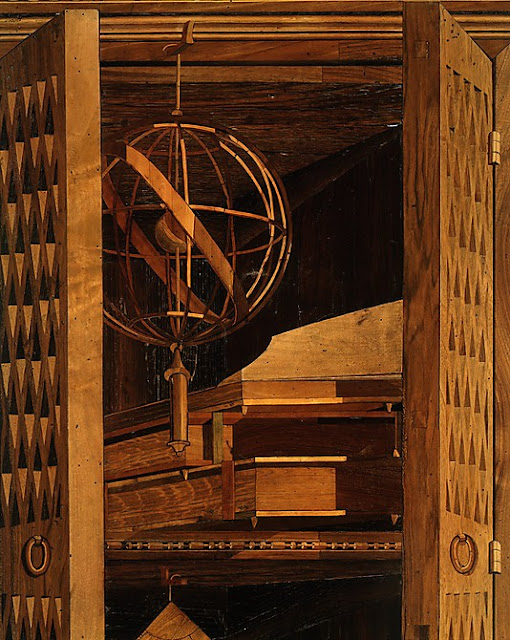"At the Metropolitan Museum, there is a recreation of the Gubbio Studiolo, the workspace where Federico da Montefeltro, the fifteenth-century general and quasi-gangster, pursued his intellectual studies. Seeing the great beauty, seriousness, and lavishness of this room is painful, because it is a reminder that Montefeltro really did exist, that such honor really was paid to the intellect, that the “Renaissance type” is not just a fiction but once flourished. It drives home the immense contrast with the present, when it is certain that no such space would be created by a rich or powerful man for the same purpose.
This kind of pain is what we sublimate and forget when we read about Montefeltro in Pound's Cantos — or, similarly, about any great historical figure. To write about the great, to turn them into literature, is to make them subordinate to the reader: the reader can complacently regard himself as the heir to all the ages, because he preserves in imagination what no longer exists in fact. From there, it is a short step to convincing oneself that human perfection never really exists in fact, that all greatness is ultimately for the sake of the reader, who possesses it in imagination. What this implies is that the historical passion is rooted in resentment: reading is a way of gaining mastery over people and things that would be too painful to confront in reality, because they are so unmistakably superior to us."
– Adam Kirsch (from Poetry, November 2012)
From the Metropolitan Museum's official description –
Studiolo from the Ducal Palace in Gubbio (c. 1478-82)
"... intended for meditation and study. Its walls
are carried out in a wood-inlay technique known as intarsia. The
latticework doors of the cabinets, shown open or partly closed, indicate
the contemporary interest in linear perspective. The cabinets display
objects reflecting Duke Federico's wide-ranging artistic and scientific
interests, and the depictions of books recall his extensive library.
Emblems of the Montefeltro are also represented. This room may have
been designed by Francesco di Giorgio (1439–1502) and was executed by
Giuliano da Majano (1432–1490)."




